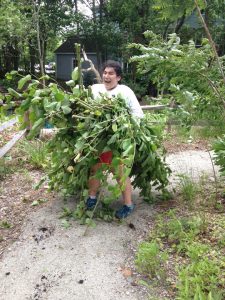 Jerry Levine, Committee Chairperson
Jerry Levine, Committee Chairperson
The committee is focused on educating residents about aquatic plants and helping them to identify invasive species.
What Are Invasive Species?
Some plants are beneficial in ponds, providing food and shelter for things living in the pond. Others, that we refer to as “invasive,” “exotic,” or “nonnative” cause problems (e.g. hydrilla, purple loosestrife and the common reed).
 Most of these invasive plants come from Europe or Asia and enter our ponds in a number of ways – e.g. through the emptying of aquariums or water garden plants into the pond and also on boat hulls, propellers, and trailers.
Most of these invasive plants come from Europe or Asia and enter our ponds in a number of ways – e.g. through the emptying of aquariums or water garden plants into the pond and also on boat hulls, propellers, and trailers.
Why Are Invasive Species Bad?
Just a few of the problems invasive species cause are:
- crowding out of other vegetation
- creation of foul smells
- formation of mats that shut out sunlight for plants below
- hindering boating and swimming
 What Can You Do to Help?
What Can You Do to Help?
Pond residents can combat invasive species through education, prevention and eradication. Boat owners can help by cleaning their boats properly, removing plant particles, washing down boats with hot water or high pressure and letting hulls dry off.
Which Species Are Invasive?
See the Guide to Selected Invasive Non-native Aquatic Species in Massachusetts under Resources on this page.
Invasive Species Project
Committee Chairperson Sara Grady conducted an aquatic weed survey of Great Herring Pond in 2010. To read her report and findings, click the link under Resources on this page.
